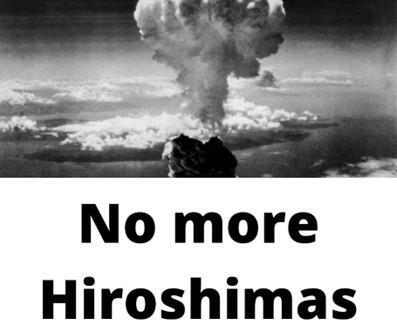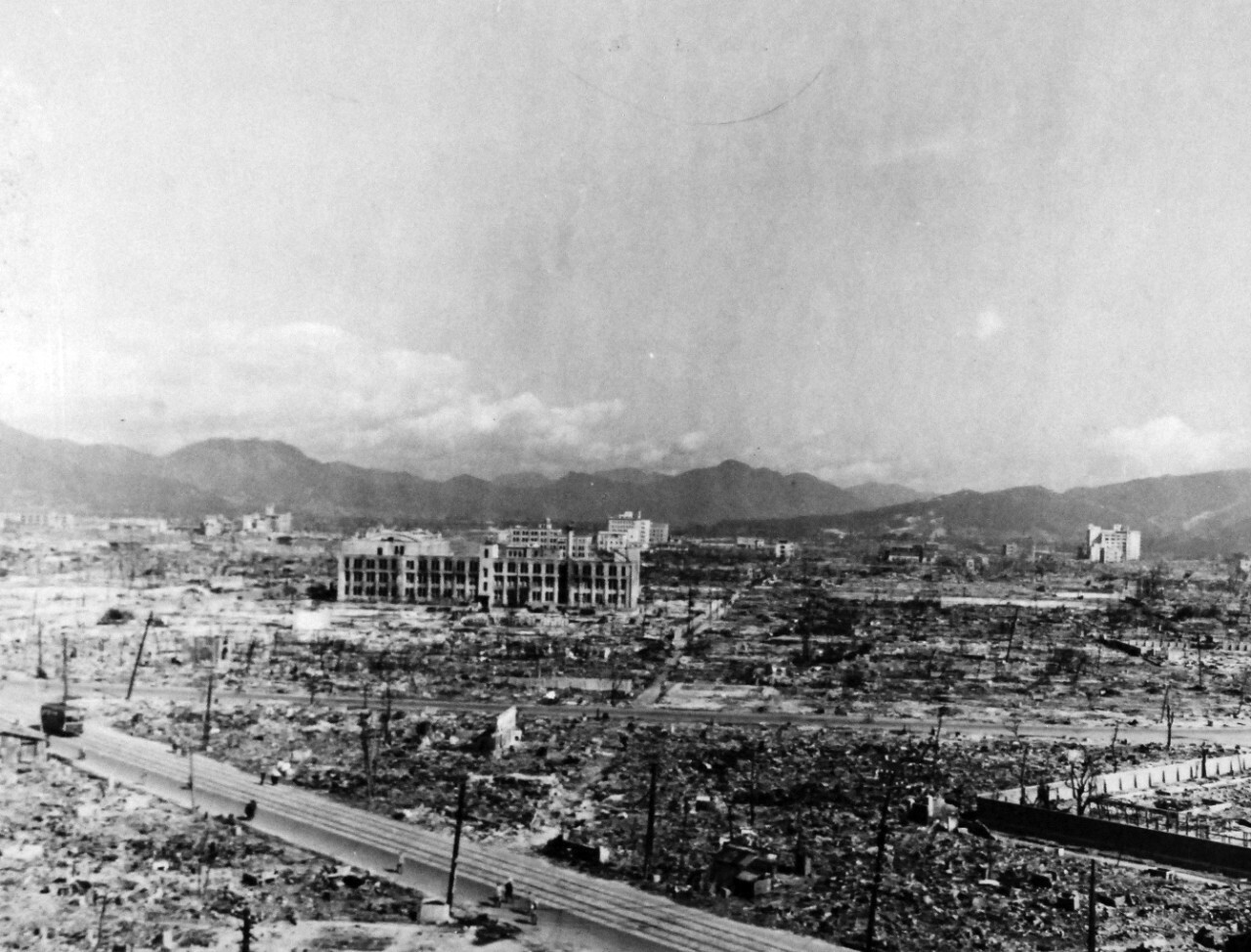Hiroshima Day Today | What is Hiroshima Day? What Happened in 1945?
Hiroshima Day, observed on August 6th, commemorates the tragic event that took place in Hiroshima, Japan, on this day in 1945, during World War II. It is the anniversary of the United States dropping its first atomic bomb on the city.
Tens of thousands of people died quickly as a result of the Hiroshima bombing, and many more endured radiation illnesses and long-term health repercussions. The devastation and loss of innocent lives serve as a powerful reminder of the destructive consequences of nuclear warfare.
Hiroshima Day is a somber opportunity to mourn the bombing victims and to consider how crucial it is to advance world peace and nuclear disarmament.
It also serves as a call for humanity to work towards resolving conflicts through dialogue and diplomacy rather than resorting to violence and destructive weapons.
On this day, various events, memorial services, and peace vigils are held around the world to honor the memory of the victims and to advocate for a peaceful and nuclear-free future.
It is a time to unite in the pursuit of global peace and to remember the significance of cherishing life and preserving the world for future generations.
Contents
- 1 Is Hiroshima occupied today?
- 2 When has Hiroshima Day been celebrated recently?
- 3 Does Japan have a day for Hiroshima?
- 4 Is Hiroshima a city again?
- 5 Who cleaned up Hiroshima?
- 6 How long did Hiroshima’s radiation last?
- 7 Why is Nagasaki not radioactive?
- 8 When did Hiroshima become safe?
- 9 For Content Writing Join me: https://t.me/+EnL9vGSSXAZjN2Q1
Is Hiroshima occupied today?
Hiroshima is not occupied today. After World War II, Japan was demilitarized and became a sovereign nation with its own government. Hiroshima, like the rest of Japan, is governed by the Japanese authorities and is not occupied by any foreign military force.
Hiroshima has since been rebuilt and transformed into a modern and thriving city. It is now known for its commitment to peace and serves as a symbol of the devastating consequences of nuclear warfare.
The Hiroshima Peace Memorial Park and Museum are significant landmarks that remind visitors of the importance of promoting peace and nuclear disarmament.
It is essential to stay up-to-date with current events, as the situation in any country can change over time.
If you have specific concerns or inquiries about the current status of Hiroshima or any other location, I recommend checking with reliable news sources or official government websites for the latest information.
When has Hiroshima Day been celebrated recently?
August 6th is designated as Hiro-shima Day each year. The atomic bombing of Hiroshima, Japan, which took place on August 6, 1945, is commemorated on this day.
Hiro-shima Day is observed worldwide as a day of remembrance and reflection on the devastating impact of nuclear warfare and the importance of promoting peace and nuclear disarmament.
Various events, memorial services, peace vigils, and educational programs are organized on this day to honor the memory of the victims and advocate for a world free from the threat of nuclear weapons.
Does Japan have a day for Hiroshima?
Yes, on August 6th of every year, Japan commemorates Hiro-shima with a ceremony known as the “Hiro-shima Peace Memorial Ceremony.”
Is Hiroshima a city again?
Yes, Hiro-shima is a city again. After the devastation caused by the atomic bombing in 1945, Hiro-shima underwent significant reconstruction efforts. Over the years, the city has been rebuilt and transformed into a modern and thriving urban center.
Hiro-shima now has a population of over a million and is a thriving metropolis. It serves as the capital of Hiroshima Prefecture in Japan and is known for its historical significance, dedication to peace, and cultural attractions.
The city has become a symbol of resilience and hope, emphasizing the importance of peace and nuclear disarmament.
The Atomic Bomb Dome, Hiro-shima Peace Memorial Park, and Hiroshima Peace Memorial Museum are just a few of the famous sites in Hiro-shima that serve as somber reminders of past tragedies and the necessity for international efforts to promote peace and avert future conflicts.
The city of Hiro-shima has come a long way since the devastation of World War II and is now a thriving metropolis, welcoming visitors from around the world to learn about its history, culture, and ongoing commitment to peace.
Who cleaned up Hiroshima?
After the atomic bombing of Hiro-shima on August 6, 1945, there were significant cleanup and reconstruction efforts to deal with the aftermath of the devastation. The responsibility for cleaning up Hiroshima fell on the surviving residents, local authorities, and the Japanese government.
How long did Hiroshima’s radiation last?
The duration of radiation in Hiro-shima after the atomic bombing in 1945 varied depending on the type of radiation and the distance from the epicenter of the explosion.
Although the bomb’s initial radiation emissions were short-lived, the long-term effects of radiation exposure lasted for many years.

Why is Nagasaki not radioactive?
There were some residual radiation levels in Nagasaki after the atomic attack on August 9, 1945, although they were not as high or as persistent as in Hiroshima. There are several factors that contributed to Nagasaki being less radioactive compared to Hiroshima:
- Distance from the Epicenter: “Fat Man,” the atomic bomb that was dropped on Nagasaki, exploded at a greater altitude than the weapon that was dropped over Hiroshima, producing a more concentrated blast and less ground-level fallout. The distance from the epicenter to various parts of the city also played a role in determining the level of radiation exposure.
- Geography and Topography: Nagasaki’s hilly terrain and natural geographic features provided some shielding and dispersion of radioactive materials, which reduced the overall impact of radiation.
- Size and Yield of the Bomb: The bomb dropped on Nagasaki had a smaller yield than the one used in Hiroshima, which meant that the amount of radioactive material released was also lower.
- Wind Patterns: Wind patterns on the day of the bombing carried the radioactive fallout away from densely populated areas, limiting the exposure to some extent.
- Prompt Evacuation: After the bombing of Hiroshima, there was increased awareness of the potential dangers of nuclear explosions. Authorities in Nagasaki acted more promptly to evacuate residents from the most heavily affected areas, minimizing further radiation exposure.
- Timing of the Bombing: Only three days had passed since Hiroshima had been bombed, therefore, whatever radiation was left over from that attack had not completely gone when Nagasaki was hit. This may have affected the overall levels of residual radiation in Nagasaki.
While Nagasaki experienced lower levels of radiation compared to Hiro-shima, it’s essential to remember that the atomic bombings had devastating and long-lasting effects on both cities and their populations.
The bombings continue to promote international peace and nuclear disarmament as heartbreaking reminders of the horrors of nuclear conflict.
When did Hiroshima become safe?
After the atomic bombing of Hiro-shima in 1945, the city went through extensive cleanup and decontamination efforts to reduce radiation levels and mitigate health risks.
Over time, the residual radiation from the bombing naturally decayed, and the city became safer for human habitation and visits.


Pingback: 37+ Freedom Fighters of India: Breaking the Mold, Blazing a Trail » VitalityVibes
Pingback: Top 10 Women Boxers In The World